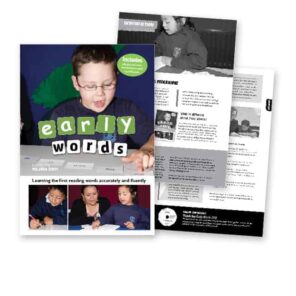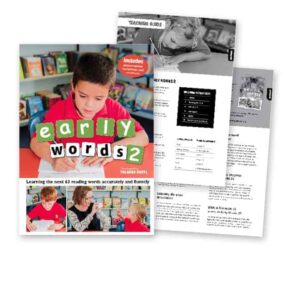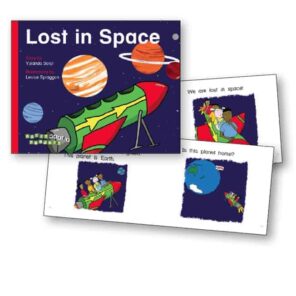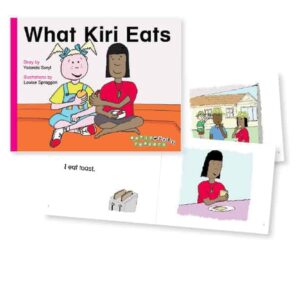For parents with children aged 5-7 years
Parents know that for children to be successful in literacy, they need to be able to work out new words, sounding them out for reading and spelling.
Yolanda has trained over 20,000 teachers in New Zealand and overseas on how to help children do this. Her ideas can also be used by parents who want to actively support and help their children read and write.
School ready literacy check
Being school-ready for literacy means starting school with the skills in place to optimise your child’s first formal literacy learning experiences.
THE CHECKLIST:
Understanding phonics
Phonics is not just knowing how to hear, read and write sounds/letters. It is also knowing how to use these sounds (phonemes) for blending and segmenting for use in reading and writing.
The starting place, once phonological awareness is developed, is the alphabet. Children need to know all the letter sounds, names, and word associations. As the brain is wired for story, it is helpful to tell children little stories (mnemonics) about each letter to teach the sound, word association, and letter name.
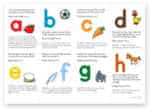 Yolanda has written a free alphabet mnemonic scheme with short letter stories and word associations that you can download for use with your child.
Yolanda has written a free alphabet mnemonic scheme with short letter stories and word associations that you can download for use with your child.
You can also buy the stories in a handy pocket-sized card pack.
Also available are letter/mnemonic flashcards, and an alphabet wall frieze that could be used in their bedroom for a fun and colourful wall decoration. Reinforce the letters whilst developing motor skills and muscles in hand necessary for writing with Yolanda’s alphabet playdough mats.
A smart tray with the Phonemic Awareness card set offers a hands on way for children to practise their phonic skills.
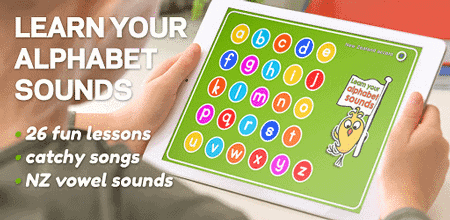
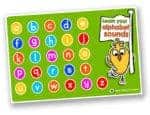 Yolanda’s Alphabet Sounds (NZ) App allows children to hear, read and write the letters for the alphabet sounds. it is available in both the Google Play and Apple stores for a $3.49 annual subscription.
Yolanda’s Alphabet Sounds (NZ) App allows children to hear, read and write the letters for the alphabet sounds. it is available in both the Google Play and Apple stores for a $3.49 annual subscription.
High-frequency words
High-frequency words are the words that appear most frequently in text. E.g., the, is, my, go, come. Did you know that only 100 words make up half of all reading? When children learn these common words (also called sight words), it frees their brain to attend to and work on the other words in text they don’t yet know. Over time, children develop an ever-increasing bank of these words until eventually almost every word is known and they have an extensive graphic knowledge. Reading is much easier when you recognise all the words and don’t have to work them out.
It takes time to develop good graphic knowledge. This is why we teach phonics. It gives children a way to get a word that they don’t yet know. But some words (e.g., was, come, saw, my, I) are not easily decodable. And for many such early words, it is more efficient to teach the child to recognise them by sight.
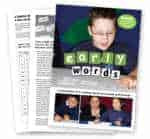 Yolanda has developed a programme called Early Words for teachers and parents to do with their children to help them learn these basic sight words. Yolanda used this programme to teach her own four children before they started school and has also taught it to many students and teachers. It has been taught in the U.K as well as many schools in New Zealand.
Yolanda has developed a programme called Early Words for teachers and parents to do with their children to help them learn these basic sight words. Yolanda used this programme to teach her own four children before they started school and has also taught it to many students and teachers. It has been taught in the U.K as well as many schools in New Zealand.
The Early Words book has all the instructions for how to teach the programme but parents are also welcome to attend Yolanda’s online Early Words courses for teachers.
-
Early Words
$75.00 -
Early Words 2
$67.00
Children reading
Here are useful suggestions of what you can do if your child is having problems and feeling stuck when learning to read.
NOTE
If your child is challenged by more than one word in every ten, the book is too hard. Either you read the story to them or take turns reading each page or unknown word so reading does not feel like a struggle. Struggling does not help children learn to read.
Tip
Encourage your child at this early level to read with their finger (drop it later once they have the idea of the one-to-one matching). Encourage them to re-read the books again and again to develop fluency and expression.
Watch Yolanda teach her nephew to read a simple guided reading book.
Yolanda has written 50 little guided reading books, the Early Words Readers, for children’s first reading experiences. These books are used in schools, but you also can start teaching your child to read with the first book in Set One (Mum). The next day, teach the second book in the set (Mum is Exercising). Then work your way up the reading levels, book by book. Children love the Early Words Readers stories. And they feel confident and successful being able to read their own little book.
Listen to Yolanda talk with Jesse on RNZ about writing the Early Words Readers.
-
Lost in Space
$7.50 -
Mum
$7.50 -
Mum is Exercising
$7.50 -
Spud
$7.50 -
What Kiri Eats
$7.50
Children writing
Here are useful suggestions of what you can do if your child is having problems spelling a word when writing.
-
Lost in Space
$7.50 -
Mum
$7.50 -
Mum is Exercising
$7.50 -
Spud
$7.50 -
What Kiri Eats
$7.50
Specific Learning Difficulties (SLDs)
Specific Learning Difficulties affecting literacy learning can include dyslexia, dysgraphia, difficulties with memory, organisation, auditory and visual processing, time management skills, and more.
Yolanda is a mother of children with severe Specific Learning Difficulties. Knowing that the education system is not resourced to properly help children with SLDs, in addition to their regular schooling, she taught them herself. She also enrolled them in external learning and support programmes and activities throughout their education.
Yolanda’s advice to parents of children with SLDs
Assessments
What can help
Schools
General

Read How My Brain Learns to Read by Duncan Milne to your child.
In this Ted talk, educator Anita Collins makes a passionate case for music education as an indispensable part of learning, describing how learning to play music is the neurological equivalent of a full-body workout.
FOCUS on
developing phonological awareness
-
 View options This product has multiple variants. The options may be chosen on the product page
View options This product has multiple variants. The options may be chosen on the product pageSmart Tray
$14.99 – $164.00

